Time units in ancient India
The definition of the current time (millennium, year, quarter, quarter, month, week, day, time, minute, second and its multiple and submultiple) can assume that they have been defined with great precision using specific and universal concepts and standards set naturally. The unit of time used in the international system of units is second, and once this is defined, the rest of units have been fixed uniquely using their multiple variables.
However, these units are not the only units that can be defined, and it may be interesting to observe the existence of a culture in which the unit of time mentioned has not been defined in the same way.
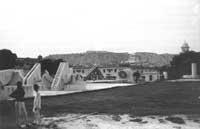
If we have done so (I. R. R. L.) In our trip to India we were surprised that the Hindus had knowledge about astronomy that had come to them since ancient times. The astronomical observatory of Jaipur impressed us exceedingly, seeing the set of amazing analyzers that can be used to calculate the local time with an accuracy of up to two seconds, both the location of the stars and the planets, when the measurement is done on a giant solar clock. Several topics on the analyzers of the observatory “Elhuyar. It was published in issue 58 of the magazine “Zientzia eta Teknika”.
What surprised us most is the proven ability to accurately calculate time. The surprise was accentuated when we realized that the time units used by Hindus over the years were also changing over time. In this article we have decided to make a compilation of the time units used by this culture. We will also analyze the equivalents to the current unitary system and some derivatives of their denominations.
Current equivalents of units of ancient India
There is no doubt that measuring time accurately for the culture of India is still of cultural importance. It is believed that the importance of astrology comes from prehistory. As the tribes gather in kingdoms and grow, their government became more complex, increasing the power and influence of astrologers.
Vavaha Mihiira, great astrologers, d.C. Who lived in the year 500, he affirmed in his writings that the astrologer did not honor him that the king was a disaster, and that a single astrologer could not compare with one hundred elephants or four hundred horses.
The acquaintances of these experts have appeared in several books in which the precise norms for carrying out temporary measurements and the data for carrying out some rites and sacrifices have been explained. Special importance had the time determinations and procedures to calculate the corresponding details. Westerners are used to making measurements in units belonging to our culture and are universally consolidated. The exact determination of time units is currently possible and this information is useful at any point in the world. The basic unit in the international system is the second. The 60 seconds complete one minute, 60 minutes an hour and 24 hours a day. We have larger units: week (7 days), month (30 days), year (365 days), millennium, etc.
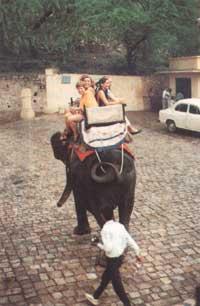
However, the mentioned units are not unique units and have been modified throughout history. In the case of India, the time units were very different. We have decided to analyze the units, their names and measurement procedures, and how they managed to transmit knowledge from one country to another. For this purpose, we have obtained a series of data from different sources that have fixed equivalents to time units and current systems.
The oldest referenced manuscript, the Vedanga Jiotisa, is written in verse with sanscrítica, and a. C. C. From 1200 to 600 years. Following the custom of that time, the teacher (who was guru) verbally taught the pupil (who was shishia) the knowledge he had for the second to learn from memory. To facilitate the work they were written in verse.
The first unit of time mentioned is the 5-year cycle (juga), which begins on the Limit Moon (January-February) and ends in the Pause (December-January). The year correspond to two parts (ayana) formed by 183 days (savana divasa), in which the day (nitemeron) is the interval between dawn and the next.
We will refer to the time divisions corresponding to intervals below the date. Known references, a.C. They are 1200 to 1030 years old and often do not coincide in the way to designate or define the unit of time.
The collection of these data is presented in the following table.
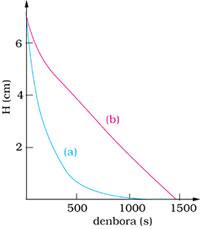
In general, in some definitions we can find common features. It is explained below. All have an equivalent time inside a day or twenty hours (nitemeron). The day has been divided into sixty numbers (nadi, nadika, gati, gatika, danda, date), being the unit of time resulting from twenty minutes. Likewise, the mentioned time unit has been divided into sixty sections, reaching a time unit of twenty seconds (vinadi, vinadika, shovel, cashaka). They have defined as small units the time necessary to pronounce the breath, or the word ten syllables (gurvak-shara), in which the unit of time coincides with the sixth part of the previously defined.
Therefore, its value is four seconds. As a curious fact, it can be said that the number of marshes per day is equal to the number of minutes in the circumference. The relationship is not as accidental as it seems. Let us not forget that the most used way to measure time in India was the sundial with the projection corresponding to the shade over the sun.
The consolidation of units under four seconds was very difficult, among other things, because their roads were not easy to rebuild. This is the difference between the values of the aforementioned time units.
Water clocks Water clocks
Short times, such as the prasta, were measured using mechanical water clocks instead of based on observations of star movements like the sun. The Hindu ritual only needed absolute time fixed by astrology and corresponding to stellar and planetary settlements. The rite also needed a clock to regulate the succession of sacrifices. To meet this goal, water clocks (called Jalaiantra) were used.
The simplest form, equivalent to the Hellenic clepsida, was in a container with water with a small hole in the background. Recalling the words of Al-Biruni:
“Reading in the book Surdava de Uptala de Kaxmirko: on the part of the wood the hole drilled with a diameter of twelve fingers and a height of six fingers has three handles of water. If at the bottom of the hole there was a hole as large as six young women’s hair, neither old woman, nor girl, the three water sleeves would fall into a conflict through the hole.”
Current astrologers would consider this watch inadequate, since, apart from the effects of stress, the water level of the container is decreasing according to the following exponential law:
H = H0 exp(-ct),
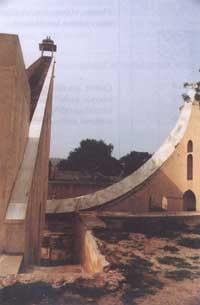
where c, in addition to the diameter of the hole, is related to other factors, such as water density and viscosity. The container would be emptied in an infinite time. Due to the effect of surface tension, the flow is cut with a small volume of water on the hollow.
Since the detail of the measurement has an inverse dependency of the slope of the curve corresponding to the expelled fluid, finally the Hindu chronographs should abandon this procedure.
Instead of doing the above and unlike the Egyptian water clock, in which the time of fall of the fluid was made by reading corresponding to the level reached by the water in the inside of the container, the falling water would be stored in a container of exact volume (a prasta). Being a vast one, he was interested in measuring that time only for his celebrations, although it was a unit of volume, it became a unit of time. It is believed that the water level in the container would remain constant and at the proper height.
This watch improved throughout history and it seems that the new version was widely used in the XII. From the beginning of the century until the appearance of European mechanical watches. The container used (gatis) gave name to the time interval it defined. Apparently, the gati, equivalent to the previous nadika and with a duration of twenty minutes, replaced the extension.
d. d. C. C. In the past Suria Sidanta written by Ranganata around 1603 the dimensions of the container have been determined: “The ship was a semisphere (capala) with a height of six fingers (angled) and twice this measure on the edge, with a capacity of sixty shovels of water. The bottom hole was able to cross a length of four fingers and a gold needle of three mashas and a weight of a third.”
Over the years, weight and measurement systems have changed in value and denomination, being interesting to know the equivalent of the current measure in each case. Taking into account that the value of the length from the big finger of the Hindus to the smallest with the open hand was 22,8 cm, it can be said that the value of the angle is 1.9 cm. Once the volume of the container is calculated, it can be concluded that:
1 shovel = 51.7 cc
or else, or
1 shovel = volume = 1/2 1/4{ r360
where r = 11,4 cm.
On the other hand, in the case of the ancient Varaha Mihiira, the weight system is based on mustard seed and on an eight times heavier rice grain. To assess its basic affirmation, 1 shovel should be 52,096 g. According to the manuscripts, it can be deduced that the mustard seed per hour had a weight of 3.7 mg. It seems to be a value that has not changed substantially in the years. However, the masha cannot be found in any scripture.
The water drop speed does not have a simple analytical solution. The water height of the glass of ten blades will be reduced rapidly over time, as can be seen in the figure (b) above, emptying the vessel to zero. At the end of the section, the slope of the curve presents a finite value, different from that obtained in the case of clepsida, so that the detail of the procedure used for the determination of the final point suffers a considerable increase. For the container to be emptied in a conflict, the value of a masha must be 0,18285 g and the weight change of 0.1% will vary the result in sixteen seconds.
Returning to the case of the Surdava water clock, by means of a simple calculation the equivalent value of 1 man can be deducted:
1 mana = volume = 1/3\r2h3
where r = h = 11,4 cm. It is. Therefore, 1 mana = 4.654 kg, that is, it is approximately 30 blades. However, Al-Biruni himself has assured that 1 mana and 15 blades are equal.
(1)VEDANGA JIOTIS (BC) 1200-600)(2)PURANA (d.C.? )(3)VISHNU PURANA (h. C. C. )(4) SURIA SIDANTA (<400 AD. )(5) SURIA SIDANTA collection (<400 dC. )(6) YUANG CHWANG (h. C. C. 629)(7) AL-BIRUNI (1030 BC)jugaaianasavana divasa |
6 years1 year1/2 years(1) | (2) (2) | (3) (3) | (4) (4) | (5) | (6) (6) | (7) |
Nictemiro |
Day Day Day | Day Day Day | Day Day Day | Day Day Day | Day Day Day | Day Day Day | Day Day Day |
trimaiatimewatchmuhurt |
---48 min | --4 hours 48 min. | ----- | ----- |
----- | 12 hours 4 hours 48 minutes | ----- |
nadinadikagatigatikadandadata |
-24 min- | ------- |
---24 min-24 min |
24 min24 min24 min24 min24 min24 | ---24 min- | ------- |
--24 min- |
Washing tight washing machine |
-1min 34s | - | - | - | - |
1 min 36 sec. | - |
vinadivicalavinadikapalacashak |
------ | ------ | --24 s24 s | 24s----- | -24s - 24s - |
------ | ---24 s |
prana (breathing) |
- | - | 4S 4S 4S | 4s4s 4s4s | 4S 4S 4S | - | 4s4s 4s4s |
kastagurvakshara (silaba)tatkshanaaksharanimeshakshanahsuntruti (theoretical value) |
1,15 --0,23 s--= 33 ?s | 3,18 s---0,21 s-- |
-2,4 s----- | ------- |
------- |
--1,6—0,013 skeine | ---6min |
Relationship Angle/Time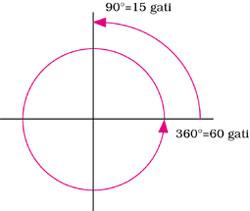 To carry out time measurements through the shadow of the body on the surface, it is necessary for Hindu astronomers to know the measures used to measure distances. In general, the shadows were projected on spherical surfaces (Kapala Jantra), circular (sundial or Samrat Jantra), wheels (Txakra Jantra) or on a plane in which the curved line was represented. In all these cases, distances will be measured in the form of circumference or semisphere angles. However, angular measurements do not match the grades, minutes and seconds of our sexagesimal system. The following criterion was used: the circumference will be divided into sixty conflicts, while the gati corresponds to sixty blades. Finally, there are six pants per shovel (six minutes). So a prán is a minute. The circumference was the expression of the vaults cells. Defining as a time unit the time interval required by the shadow to fill an angle, only the angle formed with the time used can be related. Therefore, in many cases, the same word was used to indicate both the angle and the corresponding time. The following table summarizes the equivalents.
This definition was very useful for Hindu astronomers because the planets are never located at a distance above 5º or 10º of the ecliptic. In addition, they could use the mentioned units to locate the planets. Knowing the lengths and latitudes corresponding to celestial bodies, the planet could identify them with the help of a stepped goniometer. We can finish this section with an important note: Be careful with the units when performing angular measurements with Hindi goniometers! ! |
Buletina
Bidali zure helbide elektronikoa eta jaso asteroko buletina zure sarrera-ontzian











